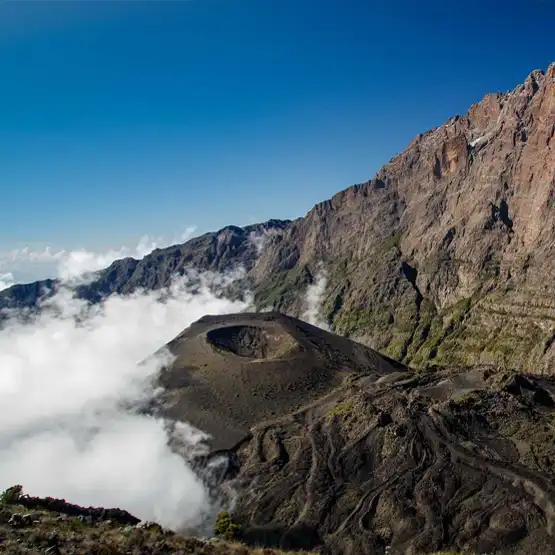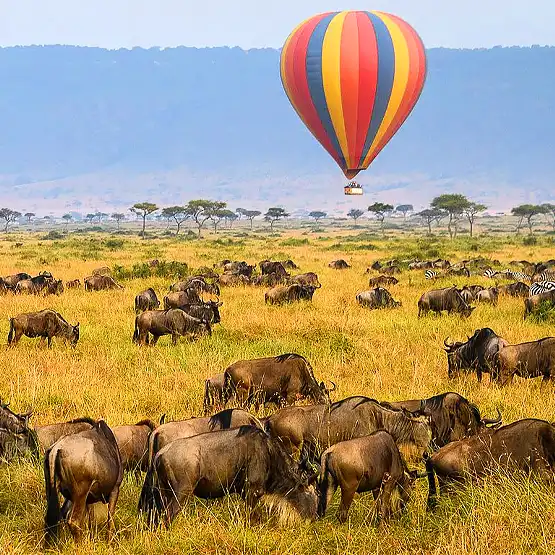Capturing the essence of the Hadzabe Tribes through your camera can be an incredibly enriching experience. However, the excitement should never overshadow the importance of respect and sensitivity towards their culture. When you visit, understanding and following proper photography etiquette is essential.
The Hadzabe Tribe, among the last hunter-gatherers in Africa, comprises around 1,300 individuals. They hold their privacy and traditions in high regard, making it crucial to seek permission before taking photographs. Studies suggest that respecting local customs not only enhances your experience but also fosters positive interactions and mutual respect.
Understanding Photography Etiquette with Hadzabe Tribes
Photography etiquette when visiting the Hadzabe Tribes involves more than just asking for permission. It’s about showing genuine respect for their culture and way of life. Ignoring these norms can disrupt their daily routines and offend them. Being aware of this fact is crucial if you want your interactions to be positive. According to this post, observing cultural sensitivity is key to successful travel photography.
One important rule is to always seek permission before taking any photos. The Hadzabe people value their privacy and may feel uncomfortable being photographed without consent. A simple gesture of asking can go a long way in creating a respectful atmosphere. This practice not only respects their boundaries but also allows for better, more meaningful images. It strengthens your relationship with them.
When taking photos, it’s also essential to be discreet and avoid using intrusive equipment. Large cameras with flashing lights can be alarming. Switching to smaller, less obtrusive gear can make a world of difference. Additionally, understanding the context of their activities helps in taking more respectful photos. Read more about this approach here.
Another aspect of photography etiquette is to refrain from immediate sharing on social media. Sharing impulsively can exploit their community. Instead, take time to think about the impact of your posts. Discuss your photos with the Hadzabe if possible before sharing publicly. This adds a layer of respect and acknowledges their sentiments.
The Importance of Asking for Permission
Before taking any photograph of the Hadzabe Tribes, asking for permission is essential. It shows respect for their personal space and culture. When you ask, you demonstrate that you value their feelings and traditions. This simple action can build trust and open the door for meaningful interaction. Without their consent, snapping a picture can seem invasive and disrespectful.
Asking for permission also sets the tone for a respectful and positive encounter. Many tribe members appreciate it when you show interest in their customs by asking before clicking. This can lead to a deeper connection and better mutual understanding. Simply put, it creates a respectful atmosphere beneficial for all. Overlooking this step could lead to misunderstandings or offense.
Understanding cultural norms around photography is crucial. Some Hadzabe may have specific times or ceremonies where photography is not appropriate. By asking, you acknowledge these boundaries and avoid disrupting important moments. This consideration preserves the authenticity and sanctity of their traditions. It also ensures your photographs are taken ethically.
Additionally, asking for permission can result in more natural and relaxed photos. When individuals know they’re being photographed, they can prepare and feel more comfortable. This can lead to images that capture their true essence and daily life. For tourists, this approach provides richer storytelling through their photos. Respectful photography is both rewarding and responsible.
Key Cultural Considerations for Photographers
When photographing the Hadzabe Tribes, it’s important to be sensitive to their cultural norms. They have rich traditions and unique ways of life that deserve respect. Always observe their daily routines and avoid interrupting significant activities. Taking the time to understand their customs can lead to more compassionate and respectful photography. Sometimes, blending in and observing can lead to the best photos.
Be mindful of sacred spaces and ceremonial events. Capturing these moments without permission can be seen as intrusive. Instead, focus on everyday activities where people feel comfortable. Respecting sacred spaces brings you closer to the community. This approach helps you build an authentic connection with the tribe.
Photographers should also be cautious with their equipment. Flashes and big cameras can be intimidating or distracting. Opt for minimal gear to keep a low profile. By doing so, you allow the Hadzabe to continue their routines without feeling like they are on display. This approach also helps to create a natural setting for your photos.
Engaging with the Hadzabe and learning about their daily life adds depth to your photography. Simple acts like sharing a meal or participating in an activity show you value their culture. Building this connection can make your photos more meaningful. Cultivating this mutual respect enriches both your experience and theirs. It’s a two-way exchange that benefits everyone involved.
Respectful Interaction Techniques Offered by Kilisa Tours
Visiting the Hadzabe Tribes with Kilisa Tours ensures you experience respectful interaction techniques. They emphasize the importance of cultural sensitivity and courteous behavior. Guides at Kilisa Tours are trained to educate visitors on the tribe’s customs and norms. By setting a good example, they foster a respectful atmosphere. This makes your visit enriching and positive for both you and the Hadzabe.
Kilisa Tours also encourages asking for permission before taking photos or joining activities. This practice helps in building trust and mutual respect. By ensuring that the Hadzabe are comfortable, it creates a more welcoming environment. The guides at Kilisa so proficiently communicate this practice to visitors. It reflects their dedication to culturally respectful tourism.
A key element of Kilisa Tours is their emphasis on minimal disruption. They teach tourists to observe quietly and participate without imposing. Whether it’s during hunting or daily chores, maintaining a low impact is a core value. This approach minimizes any potential negative effect on the tribe’s way of life. It’s a respectful way to immerse yourself in their culture.
Participation in activities is also orchestrated thoughtfully. Kilisa Tours arranges interactions that are both respectful and meaningful. This could involve learning traditional crafts or songs. These genuine exchanges leave a lasting impression. They offer a deeper understanding of the Hadzabe’s heritage.
Communication plays a vital role in these respectful interactions. Guides facilitate conversations, translating and explaining cultural nuances. This ensures that all interactions are understood and appreciated. The focus on clear communication helps bridge any cultural gaps. It makes your experience all the more enjoyable and insightful.
Kilisa Tours also takes pride in supporting the Hadzabe community. A portion of their proceeds directly benefits the tribe. This financial support helps in sustaining their culture and lifestyle. By choosing Kilisa Tours, you contribute to preserving their heritage. It’s a thoughtful way to give back while you enjoy your visit.
Learning from the Hadzabe: A Glimpse into Their Daily Life and Traditions
The Hadzabe Tribes offer a unique window into traditional hunter-gatherer life. Their daily routine revolves around hunting, gathering, and socializing. Men typically embark on hunting expeditions, using bows and arrows. Women gather fruits, berries, and tubers, ensuring a balanced diet. This cooperation showcases a remarkable sense of community.
Storytelling is a cherished tradition among the Hadzabe. In the evenings, they gather around the fire to share tales and songs. These stories pass down important lessons and history. It’s a profound way of preserving their heritage. Visitors often find these sessions deeply moving and insightful.
Language and communication form another fascinating aspect of their culture. The Hadzabe speak Hadza, a language featuring unique click sounds. This linguistic richness adds an intriguing layer to their identity. Engaging with them can be a linguistic learning experience. It reflects the deep cultural roots of the tribe.
The Hadzabe’s connection with nature is evident in their sustainable living practices. They take only what they need from the environment. This ensures minimal impact on their surroundings. Their lifestyle offers valuable lessons in sustainability. It’s a powerful reminder of harmonious coexistence with nature.
Housing among the Hadzabe is simple yet functional. They reside in temporary shelters made from locally sourced materials. These homes can be easily moved as they follow seasonal food sources. This adaptability is key to their survival. The simplicity of their shelters underscores an efficient way of life.
Traditional crafts are another important aspect of Hadzabe culture. They create tools, jewelry, and other items using natural resources. This craftwork not only serves practical purposes but also holds cultural significance. Learning these skills offers insight into their ingenuity. Each crafted item tells a story of their resourcefulness.







